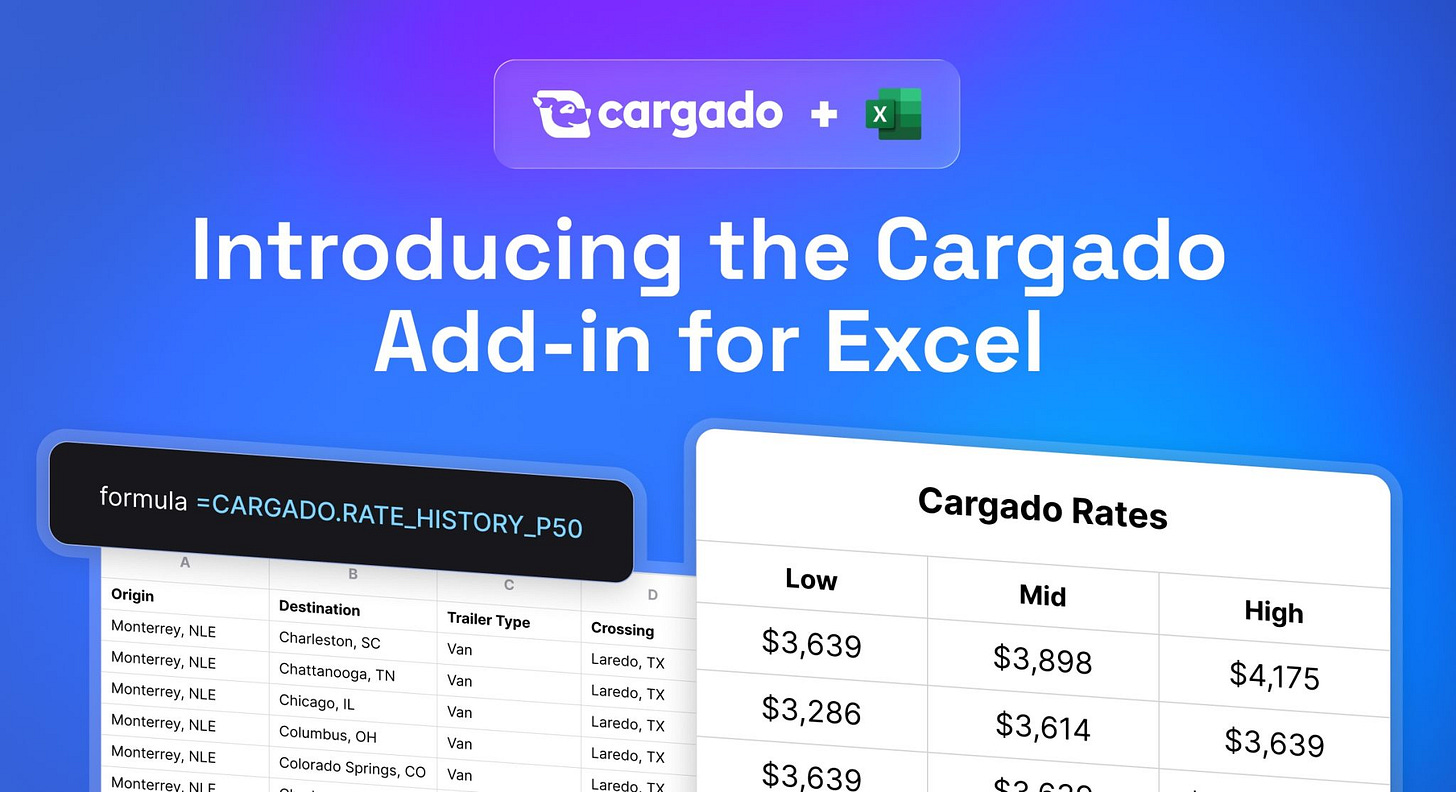The Many Faces of Carriers in Cargado
Oh, the Faces of Carriers You’ll See — across the U.S.-Mexico border and Canada’s wide roads.
When people think “Mexico carrier,” they often imagine one thing: a trucking company that can move freight in and out of Mexico. The truth is far more complicated. Carriers fall into very different categories, each with its own authorities, paperwork, and role in cross-border logistics. And now with Canada live in Cargado, the carrier landscape gets even more diverse.
At Cargado, we’ve built a network that supports domestic Mexico, cross-border Mexico, domestic Canada, and cross-border Canada freight. To do that, you need to understand who the carriers are and what makes them different.
Mexico Carrier Types
1. US-Based Carriers with CDL Drivers
These carriers haul the US side of the freight but don’t send their trucks across the border. They rely on a Mexican partner carrier to move trailers within Mexico and a transfer carrier to handle the actual crossing. Think Monterrey → Chicago, Guadalajara → Dallas, or Mexicali → Phoenix.
2. Transfer Carriers (OP-2 Authority)
Transfer carriers operate only within the commercial trade zone: Nuevo Laredo ↔ Laredo, Juarez ↔ El Paso, Tijuana ↔ Otay Mesa. They’re registered with both US and Mexican customs (SCAC, CAAT, DOT#, MX#), but their OP-2 authority prohibits them from running deeper into the US. They’re the bridge, not the long-haul.
3. US-Based Carriers with B1 Drivers (OP-1 Authority)
Some US carriers employ Mexican drivers with special B1 visas. These drivers live in border cities like Nuevo Laredo and can haul freight throughout the US, not just in the border zone. They carry US cargo insurance, run under OP-1 authority, and are often booked for door-to-door (D2D) cross-border freight. TransMex, Knight-Swift’s Mexican entity, is a good example.
4. Mexico-Based Carriers
There are over 200,000 trucking companies in Mexico. Some run domestic freight only, others specialize in drayage at ports and ramps, and many operate “rabons” and “thortons” (smaller trucks that handle partial loads, like a U-Haul in the US). They operate with RFC# (tax ID) and SCT# (DOT equivalent), and while most don’t show up in US systems like SAFER, many now partner with US entities to offer true D2D service.
Canada Carrier Types
Canada adds another layer of nuance:
Cross-Border Carriers: Canadian fleets that run north ↔ south into the US, often larger asset-based companies with significant long-haul capacity.
Domestic Canada Carriers: Thousands of smaller fleets—sometimes just 1–5 trucks—serving corridors like Toronto ↔ Montreal or Vancouver ↔ Calgary. These smaller carriers are a big part of our Canada onboarding strategy .
Specialized Segments: Just like in Mexico, you’ll find Canadian drayage carriers at rail ramps and ports, flatbed carriers hauling industrial loads, and temperature-controlled carriers serving food and pharma supply chains.
Our goal in Canada is to make sure brokers can cover both high-volume cross-border lanes and everyday domestic moves. That’s why we’ve been targeting everything from the largest fleets down to the 1–5 truck carriers that rely heavily on marketplaces .
Why This Matters
When a broker says “I need a Mexico carrier” or “I need a Canada carrier,” the reality is: Which kind? The answer changes everything about how freight gets covered.
Need a trailer from Guadalajara to Dallas? You’ll likely be dealing with at least three carriers.
Need capacity Toronto ↔ Calgary? You might be working with a small domestic fleet you’d never find outside of a platform like Cargado.
By understanding these categories, brokers avoid costly mistakes like contracting a transfer carrier for freight that requires OP-1 authority, or overlooking small fleets that can cover domestic lanes.
Cargado’s Approach
Since launching in early 2024, we’ve onboarded over 1,500 carriers across all these categories. That includes:
US carriers with CDL and B1 drivers
Transfer carriers in every major border crossing
Mexican fleets of all sizes and specialties
Canadian carriers from large cross-border fleets to the smallest domestic operators
Our job isn’t just to bring them in. It’s to make sure brokers know who they’re booking and that the freight is moving compliantly and efficiently.
It’s not quite so simple
“Mexico carrier” and “Canada carrier” aren’t single categories. They’re ecosystems of fleets with different authorities, paperwork, equipment, and service areas.
That’s why Cargado exists — to make it easy for brokers to tap into the right carriers for the right lanes, whether that’s Monterrey ↔ Chicago, Guadalajara ↔ Saltillo, Toronto ↔ Montreal, or anything in between.
When you understand the carrier landscape, you realize why marketplaces matter: because building this network yourself would be nearly impossible.
The Cargado Excel Add-In is Here!
P.S.: Quoting lanes just got easier. The Cargado Add-in for Excel is now live. You can pull cross-border market rates directly into your RFP spreadsheets without leaving Excel. Instantly see low, median, and high rates for your lanes, complete with confidence levels and margin of error. For advanced users, we’ve even added custom functions like =CARGADO.RATE_HISTORY_P50
(And yes, a Sheets add-in is coming soon)
👉 Stay updated on the latest in cross-border logistics and freight tech by subscribing at CongratsOnAllTheProgress.com.



